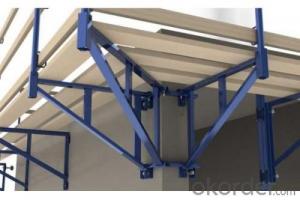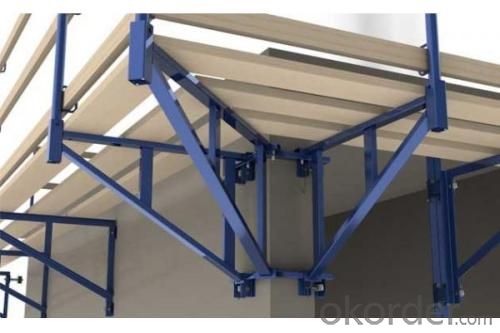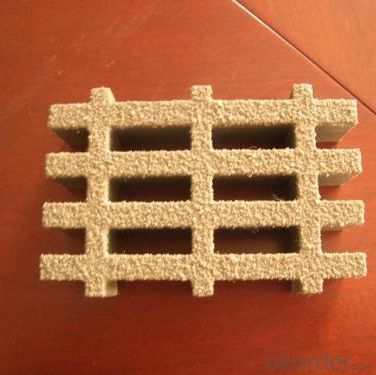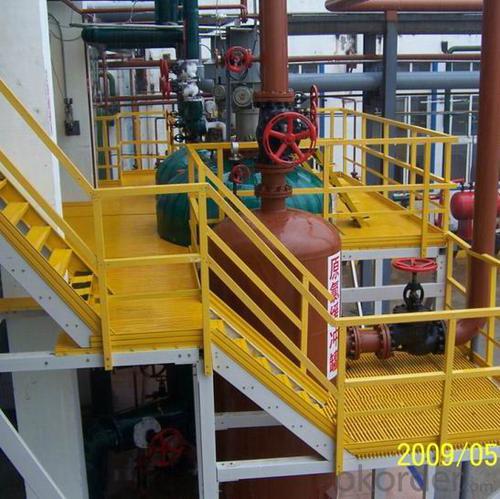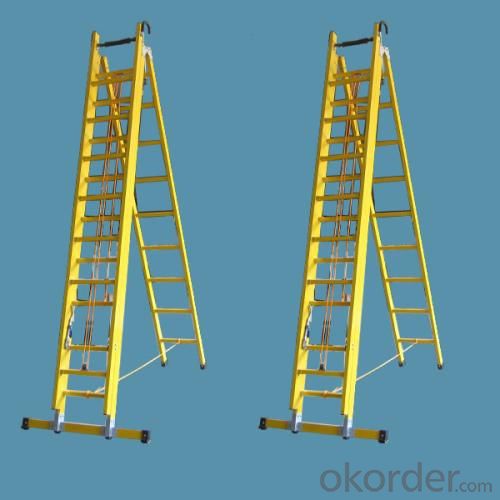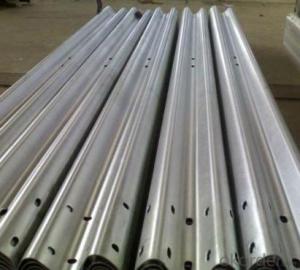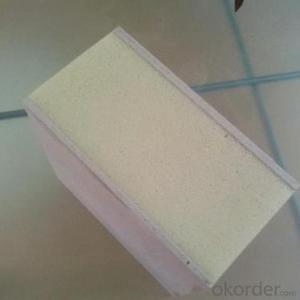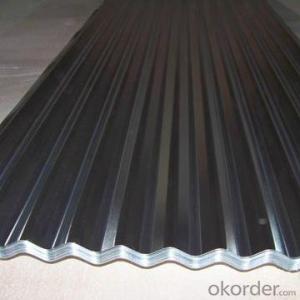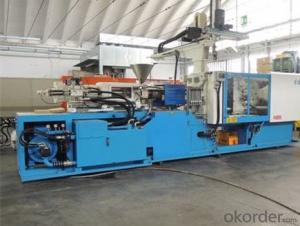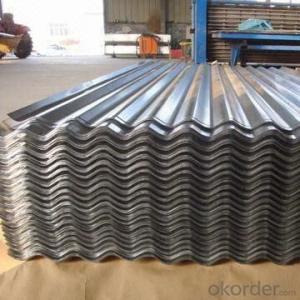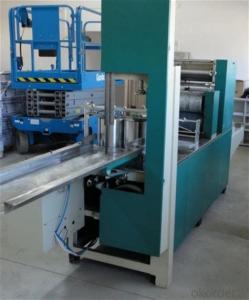FRP Pultrusion Profiles - Pultruded Gratings Anti-Fatigue
- Loading Port:
- Tianjin
- Payment Terms:
- TT OR LC
- Min Order Qty:
- 2000 watt
- Supply Capability:
- 50000 watt/month
OKorder Service Pledge
OKorder Financial Service
You Might Also Like
Specification
PRODUCT DESCRIPTION
Pultruded grating is made by a particular assembly process, which using “I” shape as its main load-bearing and special rod to go through the bearing bar. Pultruded grating include the standard grating and the custom grating, the custom grating can be designed to meet customer’s requirement or special using condition by changing the shape, size and space of the bearing bars, the surface can be covered with lozenge panel, grit panel, or added the anti-slippery sand directly.
FRP pultruded grating has the most characteristics of molded grating, but it has its distinct advantages, it has very high fiberglass content in the loading direction, so it has very high load capability, it has more superiority when used at wide span, so that the basic support will be decreased and the project cost will be reduced accordingly.
SPECIFICATION
The standard space between two crossbars is 6 inch or 12 inch.
Thickness (mm) | Bar width (mm) | Open space (mm) | Open rate (%) | Approx weight (kg/m |
25.4 | 15.2 | 22.8 | 60 | 13.2 |
25.4 | 15.2 | 15.2 | 50 | 15.9 |
25.4 | 15.2 | 10.1 | 40 | 18.5 |
25.4 | 40 | 10.8 | 21 | 14.5 |
38.1 | 15.2 | 22.8 | 60 | 15.8 |
38.1 | 15.2 | 15.2 | 50 | 19.1 |
38.1 | 15.2 | 10.1 | 40 | 22.4 |
50.8 | 25.4 | 25.4 | 50 | 16.6 |
50.8 | 25.4 | 12.7 | 33 | 21.1 |
CHOICE FOR PULTRUDED GRATING
Resin: GP resin, ISO resin, VE resin, Phenol resin
Color choice: Yellow, gray, green, custom color
Surface choice: Groove surface, grit surface, lozenge cover surface
FEATURES
a. Anti-corrosion and anti-rust
b. Light weight and high strength
c. Anti-flammable
d. Anti- fatigue
e. Safe and anti-slippery
f. Anti-ageing
g. Easy of maintenance
FIELDS SERVED
Sewage treatment,
water supply and drainage,
chemical industry,
oil industry,
power engineering,
pulp and paper,
construction engineering,
spinning, marine engineering.
APPLICATION
Operation terrace,
stair walkway,
ground floor,
trench cover,
sidewalk,
foot bridge,
equipment safety fence,
scaffold.
COMPANT DESCRIPTION
CNBM,China National Building Materials Group is a state-owned enterprise in charge of administrative affairs in china building materials industry. Established in 1984, CNBM is a large group corporation of building materials with total assets of 25 billion RMB and a total staff of 30,000.CNBM now owns 200 subordinating firms of solely owned and joint-venture companies.
CNBM International Corporation is one subsidiary of CNBM, we focus on offering good-quality products,professional service and complete solution to our customers. Strong delivery capacity, advanced technology& management, strong financing capability and excellent after-sale service are our advantages in sharing international market.
FAQ
1.Q:Are you factory or trading company ?
A:We are Factory produce FRP machines and FRP products.
2.Q:If can customized by customers requirements?
A:yes,we can produce the machine with customized size.
3.Q:How about the payment?
A:We accept any kind of payment.
4.Q:What is the guarantee?
A:Gurantee is one year.
5.Q:If you can training?
A:yes ,we can training in our factory also can send engineers to your factory training.
PICTURES
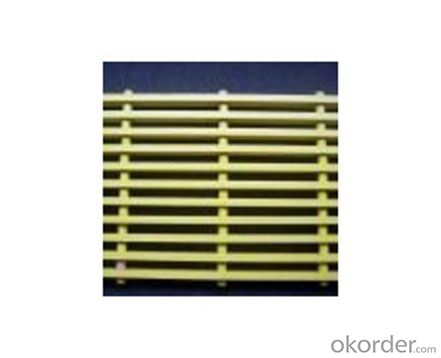
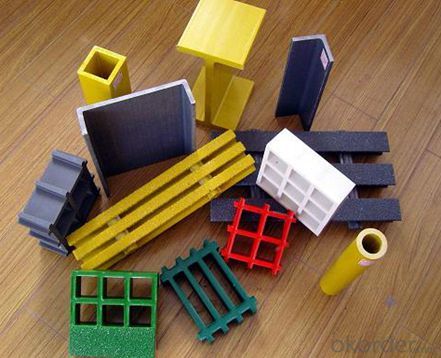
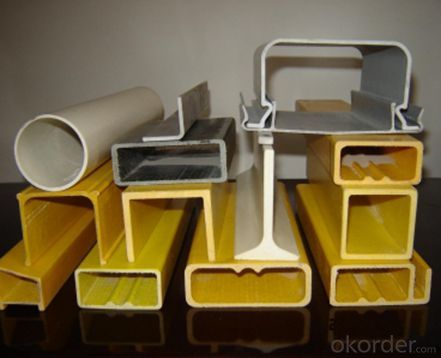
- Q: Are FRP pultrusion profiles resistant to high winds or hurricanes?
- FRP pultrusion profiles offer exceptional resistance against high winds and hurricanes. Combining the robustness of fiberglass with the longevity of polymers, FRP is a lightweight yet remarkably sturdy material that can endure severe weather conditions. Extensive testing has proven that FRP pultrusion profiles exhibit outstanding wind resistance properties. They possess a remarkable stiffness-to-weight ratio, enabling them to withstand the powerful forces generated by high winds without deformation or breakage. Additionally, the inherent flexibility of FRP permits it to absorb and distribute wind forces, minimizing the risk of damage. In the face of hurricanes, FRP pultrusion profiles have demonstrated their capability to withstand the intense winds and airborne debris associated with such extreme weather events. They have been successfully employed in various applications, including building facades, bridges, and utility poles, in areas prone to hurricanes. Moreover, FRP pultrusion profiles possess corrosion resistance, providing an extra advantage in withstanding high winds and hurricanes. Unlike traditional materials like steel or wood, FRP profiles do not rust or decay when exposed to moisture, making them even more suitable for these demanding weather conditions. Overall, with their exceptional strength, durability, flexibility, and corrosion resistance, FRP pultrusion profiles are an excellent choice for applications requiring resistance against high winds or hurricanes.
- Q: The manufacturing process of FRP products?
- Each technique has its own characteristics. Production enterprises determine the process method in the selection, according to the basic situation of the enterprise and the production of products, such as mass production and product quality requirements, as well as the technical basis for enterprise capital and production factors such as comprehensive consideration.
- Q: How do FRP pultrusion profiles perform in extreme temperatures?
- FRP pultrusion profiles are renowned for their exceptional performance in extreme temperatures. Their distinctive composition of fiberglass and resin matrix grants them a remarkable resistance to thermal expansion and contraction. As a result, even in the most frigid or scorching environments, FRP profiles retain their structural integrity without any warping or deformation. When exposed to high temperatures, FRP pultrusion profiles display an impressive stability in terms of dimensions, as they do not undergo softening or melting like certain other materials. With a high glass transition temperature, they can endure extreme heat without compromising their strength or shape. This quality renders FRP profiles fitting for applications such as furnace components, exhaust systems, and industrial ovens. Conversely, in exceedingly cold temperatures, FRP pultrusion profiles maintain their toughness and durability. They do not turn brittle or susceptible to cracking, unlike conventional materials like metal or concrete. This characteristic makes them suitable for employment in cold storage facilities, refrigerated trucks, and various low-temperature environments. Additionally, FRP pultrusion profiles exhibit excellent resistance to chemical corrosion. They remain unaffected when exposed to a multitude of chemicals or solvents, making them well-suited for harsh chemical processing environments. This resistance to chemical corrosion also extends to extreme temperatures, further enhancing their performance in such conditions. All things considered, FRP pultrusion profiles have established themselves as reliable and versatile materials for extreme temperature environments. Their capacity to uphold structural integrity, dimensional stability, and resistance to chemical corrosion positions them as the preferred choice for diverse industries and applications where temperature extremes are a concern.
- Q: How do FRP pultrusion profiles handle cyclic torsion loads?
- FRP (Fiber Reinforced Polymer) pultrusion profiles are designed to handle cyclic torsion loads effectively. The unique properties of FRP materials make them highly resistant to fatigue, making them suitable for applications where cyclic torsion loads are expected. One key advantage of FRP pultrusion profiles is their high strength-to-weight ratio. Reinforced with fibers such as glass or carbon, these profiles offer excellent tensile strength and stiffness, enabling them to withstand repeated torsional forces without deformation or failure. Moreover, FRP pultrusion profiles exhibit superior resistance to corrosion and chemical degradation compared to traditional materials like steel. This resistance ensures that the profiles maintain their structural integrity even in harsh environments where cyclic torsion loads may be prevalent. The manufacturing process of pultrusion also contributes to the ability of FRP profiles to handle cyclic torsion loads. During pultrusion, continuous fibers are impregnated with a polymer resin and then pulled through a heated die, where they are cured and shaped into the desired profile. This process ensures a uniform distribution of fibers throughout the profile, resulting in enhanced strength and stiffness in all directions, including torsion. To further enhance the performance of FRP pultrusion profiles under cyclic torsion loads, engineers employ design techniques such as optimizing the fiber orientation and selecting appropriate resin systems. These measures help distribute the torsional forces evenly across the profile, minimizing stress concentrations and improving the fatigue resistance. In summary, FRP pultrusion profiles are specifically engineered to handle cyclic torsion loads. Their high strength-to-weight ratio, resistance to corrosion, and uniform fiber distribution make them an ideal choice for applications where cyclic torsion loads are a concern.
- Q: What are the load-bearing capabilities of FRP pultrusion profiles?
- The load-bearing capabilities of FRP pultrusion profiles vary depending on the specific profile design and the type of reinforcement used. However, FRP pultrusion profiles are known to have high strength-to-weight ratios and can generally handle heavy loads. They are often used in structural applications where strength and durability are important factors.
- Q: What is the fatigue resistance of FRP pultrusion profiles?
- The fatigue resistance of FRP pultrusion profiles is generally high due to the inherent properties of the material, such as its high strength-to-weight ratio, excellent stiffness, and resistance to corrosion. However, the specific fatigue resistance of FRP pultrusion profiles can vary depending on factors such as the type of resin used, the manufacturing process, and the design considerations. Overall, FRP pultrusion profiles are known to exhibit good fatigue performance and can withstand repeated loading cycles without significant degradation in mechanical properties.
- Q: Are FRP pultrusion profiles resistant to chemicals used in food processing?
- Yes, FRP pultrusion profiles are generally resistant to chemicals used in food processing. Fiberglass reinforced plastic (FRP) is known for its excellent chemical resistance, making it suitable for various industrial applications, including the food processing industry. FRP pultrusion profiles are composed of a combination of resins and fiberglass reinforcements, which provide them with inherent resistance to a wide range of chemicals. FRP pultrusion profiles are typically resistant to acids, alkalis, solvents, and many other chemicals commonly found in food processing environments. This resistance ensures that the profiles will not corrode, degrade, or react with the chemicals, preserving their structural integrity over time. This makes FRP pultrusion profiles a reliable choice for equipment, structures, and components used in food processing facilities. However, it is important to note that the specific chemical resistance of FRP pultrusion profiles can vary depending on the resin system used in their manufacturing. Different resins offer different levels of resistance to specific chemicals. Therefore, it is crucial to select the appropriate resin formulation that matches the specific chemical environment in the food processing industry. To ensure the compatibility of FRP pultrusion profiles with the chemicals used in food processing, it is advisable to consult with the manufacturer or supplier. They can provide detailed information on the chemical resistance properties of their FRP profiles and assist in selecting the most suitable materials for the specific application. Additionally, proper maintenance and regular cleaning practices should be implemented to ensure the longevity and continued chemical resistance of FRP pultrusion profiles in food processing environments.
- Q: FRP pultrusion process?
- Reinforcement materials used in pultrusion processes, mainly glass fibers and their products, such as roving, continuous fiber felt, etc.. In order to meet the special requirements of the products, aramid fiber, carbon fiber and metal fiber can be used. No matter which fiber is used in the pultrusion process, the surface must be treated so that it can be well bonded with the resin matrix.
- Q: Can FRP pultrusion profiles be used in the oil and gas industry?
- Yes, the oil and gas industry can utilize FRP (Fiber Reinforced Polymer) pultrusion profiles. These profiles offer numerous advantages that make them suitable for use in this sector. To begin with, FRP pultrusion profiles exhibit corrosion resistance. They remain unaffected by harsh conditions such as saltwater, chemicals, and extreme temperatures, thereby avoiding rusting, corrosion, or degradation. Consequently, they prove ideal for offshore platforms, pipelines, and other oil and gas facilities where corrosion poses a significant problem. Moreover, FRP pultrusion profiles possess a high strength-to-weight ratio. Despite being lightweight, they possess remarkable strength, enabling efficient installation, transportation, and handling. This aspect is especially advantageous in the oil and gas industry, where reducing weight is crucial for enhancing operational efficiency and decreasing costs. Additionally, FRP pultrusion profiles can be customized to meet specific requirements. They can be manufactured in various shapes, sizes, and configurations, making them adaptable for diverse applications within the oil and gas industry. Whether it be for structural supports, grating, handrails, or other components, FRP pultrusion profiles can be tailored to perfectly suit the distinct needs of each project. Furthermore, FRP pultrusion profiles offer exceptional electrical insulation properties. This attribute holds immense importance in the oil and gas industry, where electrical safety is of utmost priority. By providing insulation and preventing electrical conductivity, FRP profiles reduce the risk of accidents and ensure the safety of both personnel and equipment. In conclusion, FRP pultrusion profiles have demonstrated their reliability, durability, and cost-effectiveness across various applications within the oil and gas industry. Their resistance to corrosion, high strength-to-weight ratio, customization capabilities, and electrical insulation properties make them an appealing choice for this demanding sector.
- Q: What are the mechanical properties of FRP pultrusion profiles?
- FRP pultrusion profiles have several desirable mechanical properties. They are known for their high strength-to-weight ratio, which makes them lightweight yet strong. Additionally, FRP pultrusion profiles exhibit excellent corrosion resistance, making them suitable for use in harsh environments. They also have good dimensional stability, meaning they do not easily warp or deform over time. Moreover, FRP pultrusion profiles have a high stiffness, providing structural integrity and minimizing deflection under load.
Send your message to us
FRP Pultrusion Profiles - Pultruded Gratings Anti-Fatigue
- Loading Port:
- Tianjin
- Payment Terms:
- TT OR LC
- Min Order Qty:
- 2000 watt
- Supply Capability:
- 50000 watt/month
OKorder Service Pledge
OKorder Financial Service
Similar products
Hot products
Hot Searches
Related keywords
